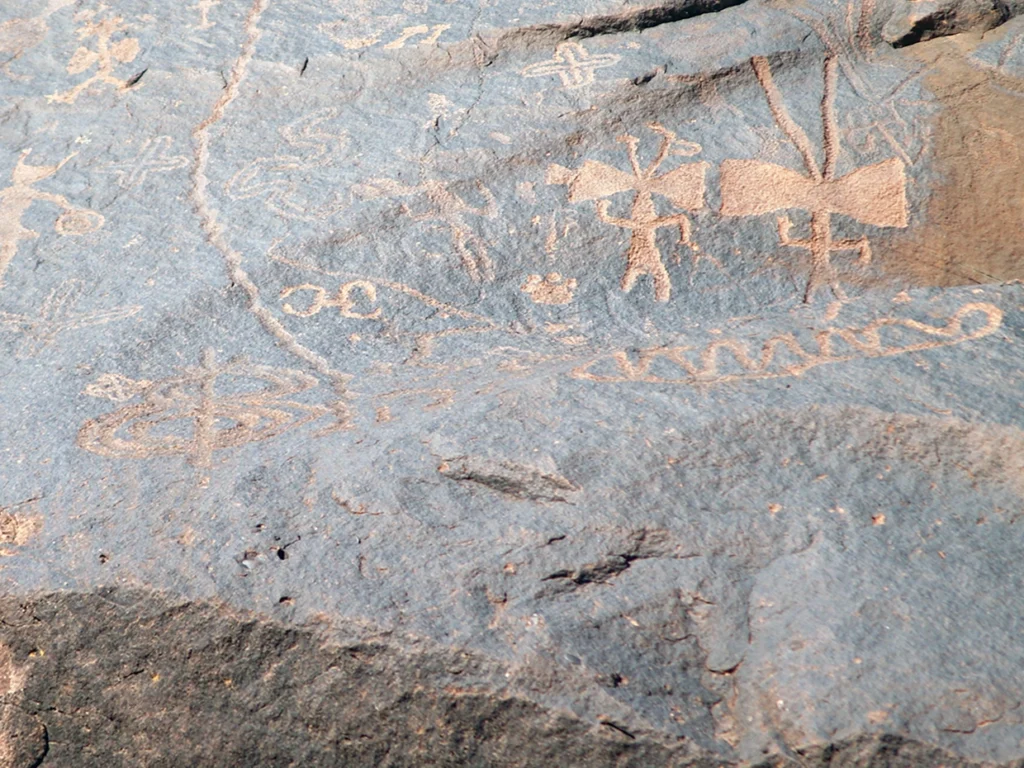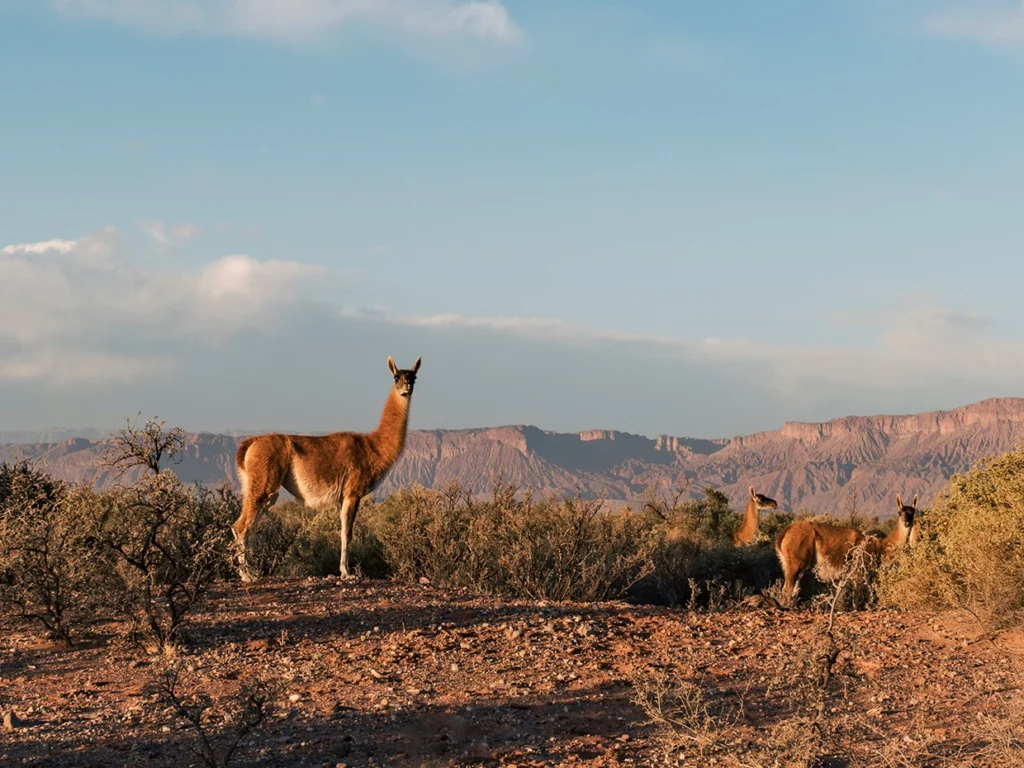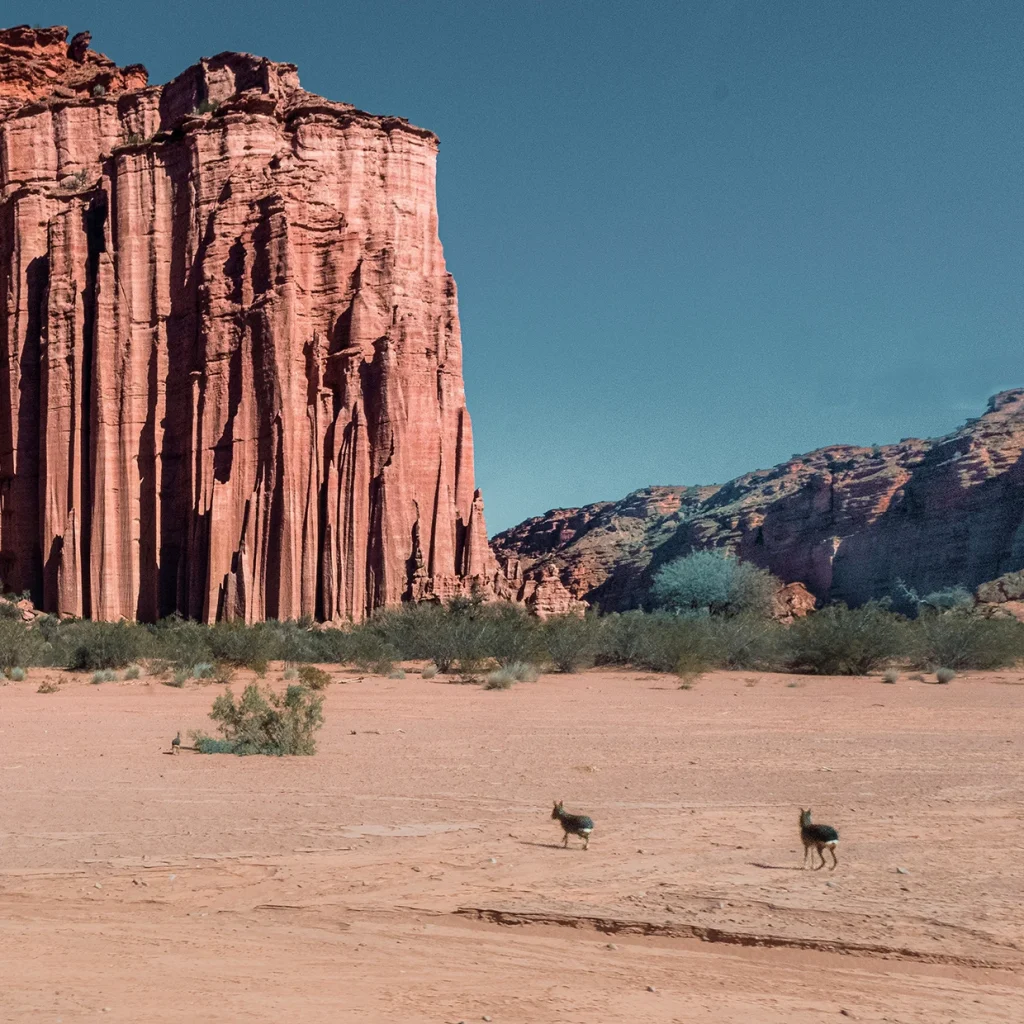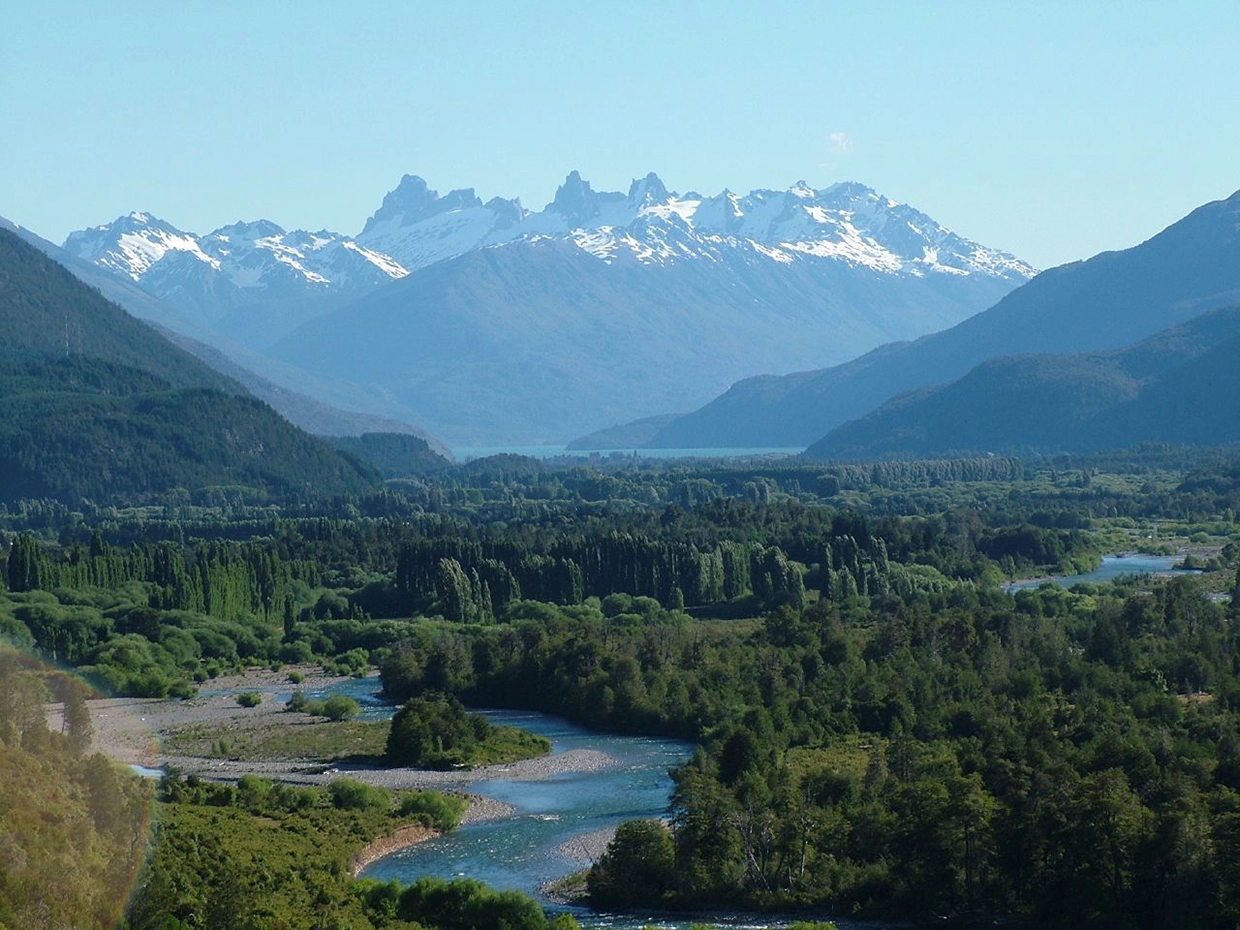Talampaya National Park, located in the Argentine province of La Rioja, is undoubtedly a natural and geological wonder that offers magical landscapes and is also a place of archeological and geological interest.
It is part of the same geological formation as Ischigualasto Provincial Park located in the province of San Juan, also known as Valle de la Luna (Valley of the Moon). In 2000 Unesco declared both parks as World Heritage Sites.
- Talampaya National Park
- 1. Talampaya Canyon Trail
- 2. Cathedral Trail
- 3. Canyon Valley Trail
- 4. Dinosaur Footprints Trail
- 5. Sierra de los Colorados Lookout Trail
- 6. Cave Paintings Trail
- 7. Recorrido de Observación de Fauna
- Villa Unión
- Villa Unión Viewpoint
- Miranda Hill
- Laguna Brava Provincial Reserve
- Senderismo
- Rainbow Canyon
- Anchumbil Canyon
- Enchanted Valley
- Land of dinosaurs and paleontological relics
Talampaya National Park
The main area within the park is the dry valley of the Talampaya River. At a certain point, the valley becomes a canyon 80 meters wide and 143 meters deep.
The way to tour Talampaya is through organized excursions. The park also has services for visitors, such as specialized guides, information centers and rest areas. The excursions leave at fixed times from the visitor’s center and if you choose the classic tour it will take approximately 3 hours.
In Talampaya National Park, several trails are offered to explore its impressive geography and discover its rich biodiversity. The trails are designed for different levels of difficulty and last from a couple of hours to half a day. The most outstanding are:
1. Talampaya Canyon Trail
- Duration: Approximately 2 hours
- Difficulty: Moderate
- The park’s main attraction is an impressive red-walled canyon that rises up to 150 meters high. It’s an ideal place for hiking and enjoying spectacular views. The tour through the canyon reveals unique rock formations, and you can see cave paintings dating back thousands of years.
You can explore the interior of Talampaya Canyon, a majestic red-walled gorge, where you can walk among impressive rock formations. During the tour, guides explain the geological history of the area, the cave paintings, and the fossil footprints found throughout the canyon. The trail is relatively accessible, although the terrain is uneven.
2. Cathedral Trail
- Duration: Approximately 1.5 hours
- Difficulty: Low to moderate
- This trail leads to one of the park’s most famous rock formations, “The Cathedral,” an imposing rock tower notable for its distinctive shape. It’s a relatively short but very scenic hike, offering panoramic views of the canyon and surrounding area. It’s ideal for those looking for a shorter but equally spectacular experience.
3. Canyon Valley Trail
- Duration: Approximately 4 hours
- Difficulty: Moderate
- This trail explores a more remote area of the park, known for its beautiful rock formations. You walk through a valley surrounded by canyons, offering exceptional views of the colors and shapes of the rocks. Along the way, it’s common to spot local wildlife such as guanacos, foxes, and a variety of birds.
4. Dinosaur Footprints Trail
- Duration: Approximately 1 hour
- Difficulty: Low
- On this trail, you can see fossilized dinosaur footprints, one of Talampaya’s most fascinating features. The relatively short tour focuses on the park’s prehistoric geology, allowing visitors to understand what the region’s fauna was like millions of years ago.
5. Sierra de los Colorados Lookout Trail
- Duration: Approximately 3 hours
- Difficulty: Moderate
- This trail offers a panoramic view of the Sierra de los Colorados, a mountain range of great beauty, with its reddish and ochre hues. From the lookout point, you have a spectacular view of the park and the canyon. This trail is more challenging, as it involves a moderate climb, but the view is worth the effort.
6. Cave Paintings Trail
- Duration: Approximately 1.5 hours
- Difficulty: Low
- This tour is ideal for those interested in archaeology. The trail takes visitors to a site with cave paintings created by the indigenous cultures that inhabited the region. During the walk, guides explain the cultural significance of these paintings and how they relate to the history of the area.

7. Recorrido de Observación de Fauna
- Duration: Approximately 2 hours
- Difficulty: Low
- Although not a traditional trail, this guided activity takes you to specific areas of the park where you can observe local wildlife in its natural habitat. You can see species such as guanacos, foxes, birds, and reptiles while learning about Talampaya’s ecosystem.

Villa Unión
It’s a quiet and welcoming little town, with picturesque streets and the opportunity to interact with the friendly locals. It’s a great base and offers a variety of interesting tourist attractions to visit. It’s an excellent accommodation option, about 45 minutes from Talampaya and an hour and a half from the Valley of the Moon.
Villa Unión Viewpoint
From Villa Unión’s town center, just four blocks from the main square, lies the La Loma viewpoint. It features 136 steps that take you to the top for a panoramic view of the city. Climbing some colorful steps on the outskirts of town, you’ll find a viewpoint that offers panoramic views of Villa Unión and the surrounding valley, with vineyards and mountains in the background. In addition to these natural attractions, Villa Unión is also a good starting point for exploring Cuesta de Miranda, the Laguna Brava Nature Reserve, and other sites of interest in the region.
Miranda Hill
This scenic road runs between Villa Unión and Chilecito. It climbs to 200 meters above sea level and offers incredible scenery.
Laguna Brava Provincial Reserve
Traveling by private vehicle or booking a tour from Villa Unión, reaching this incredible high-altitude lagoon will take approximately 5 hours. Surrounded by some of Argentina’s highest peaks, this is a great place to enjoy the rugged mountain range. It’s advisable to visit between October and March because low temperatures and particularly strong winds can occur. Hundreds of pink flamingos live in the lagoons, and vicuñas and guanacos are common sights along the way.
Senderismo
Rainbow Canyon
Located a few kilometers from Villa Unión, Rainbow Canyon impresses with its colorful rock walls resembling a rainbow. It’s an ideal place to explore and enjoy the natural beauty.
Anchumbil Canyon
This canyon, also known as “Little Talampaya,” is located near Villa Unión and shares similarities with Talampaya National Park in terms of colors, shapes, and geological structures.
Enchanted Valley
The Enchanted Valley is another outstanding natural site, with a reflecting pool surrounded by an arid landscape that contrasts charmingly.
Land of dinosaurs and paleontological relics
Talampaya is a park of tourist interest as well as an important site for paleontological research and for understanding the history of life on Earth. Numerous dinosaur fossil remains have been found, which have significantly contributed to the study of dinosaur evolution in South America and around the world. In addition to dinosaurs, the park houses a wide variety of fossils that provide invaluable information about the fauna that inhabited the region in the past and help reconstruct ancient ecosystems. There are countless fossils of reptiles, mammals, and fish. Their preservation is exceptional due to the geological conditions of the area, which have allowed the remains to be preserved in a relatively intact state over time.
Fauna
In this landscape that reminds us time and again of the films of the Wild West, mountain foxes, guanacos, maras (in the photo), land turtles and a myriad of lizards, to which are added the condor, the Andean suri, the peregrine falcon and the black-legged chuña (a bird that does not look too similar to any we have seen before).


Talampaya is much more than a natural park: it’s a journey through time, where the red rock formations sculpted by wind and water tell ancient stories. Its colorful deserts, imposing canyons, and traces of prehistoric life make it a unique place to visit in Argentina.


